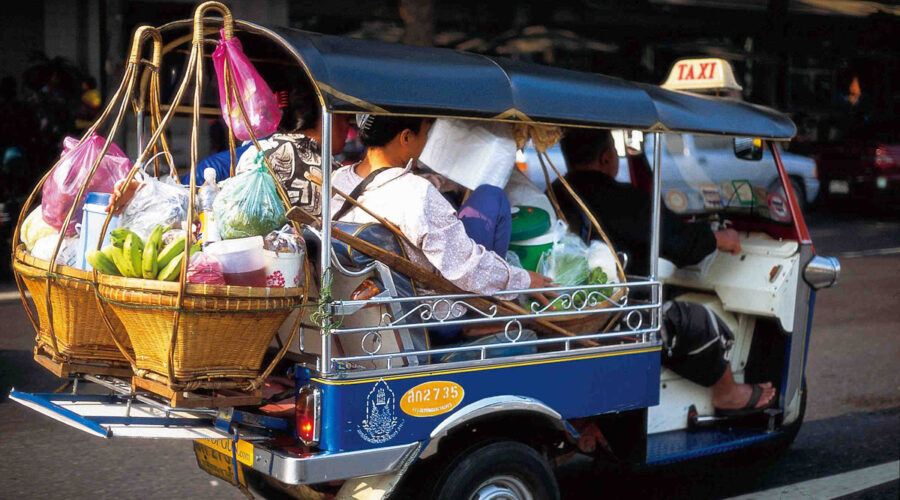A Ticket To Ride, Thailand-Style
Travel writer John Borthwick considers all options traveling on Thailand’s transports of delight and occasional despair.
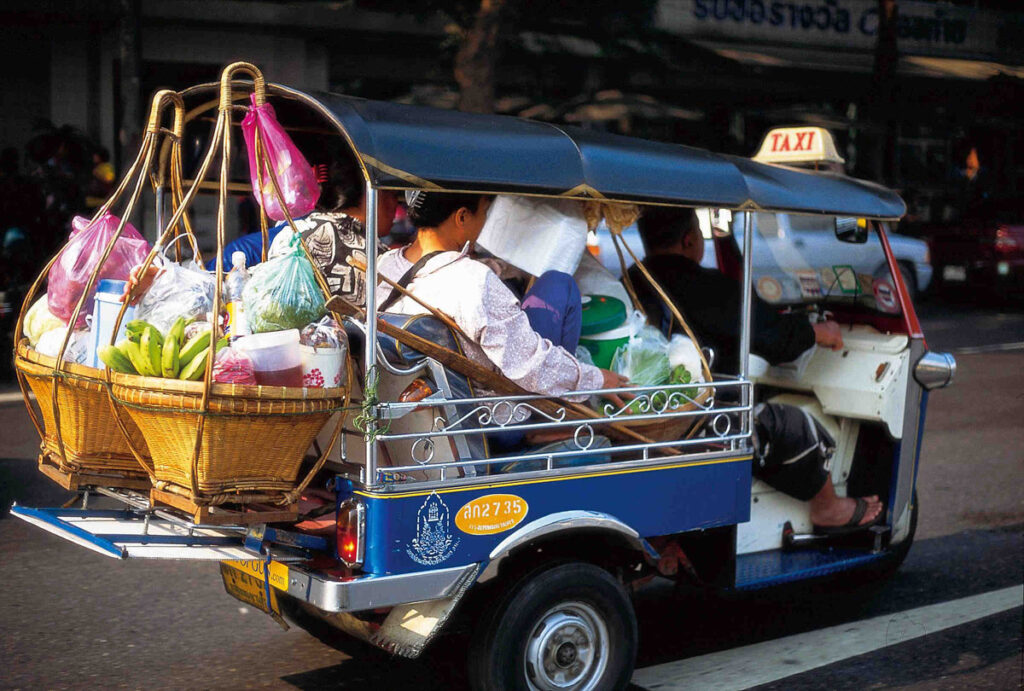
Bicycle (City)
In Bangkok, sheer masochism. The Big Mango’s traffic is constant and intimidating; might is right and two wheels are “wrong” unless they’re attached to a motorbike. Chiang Mai’s traffic is safer.
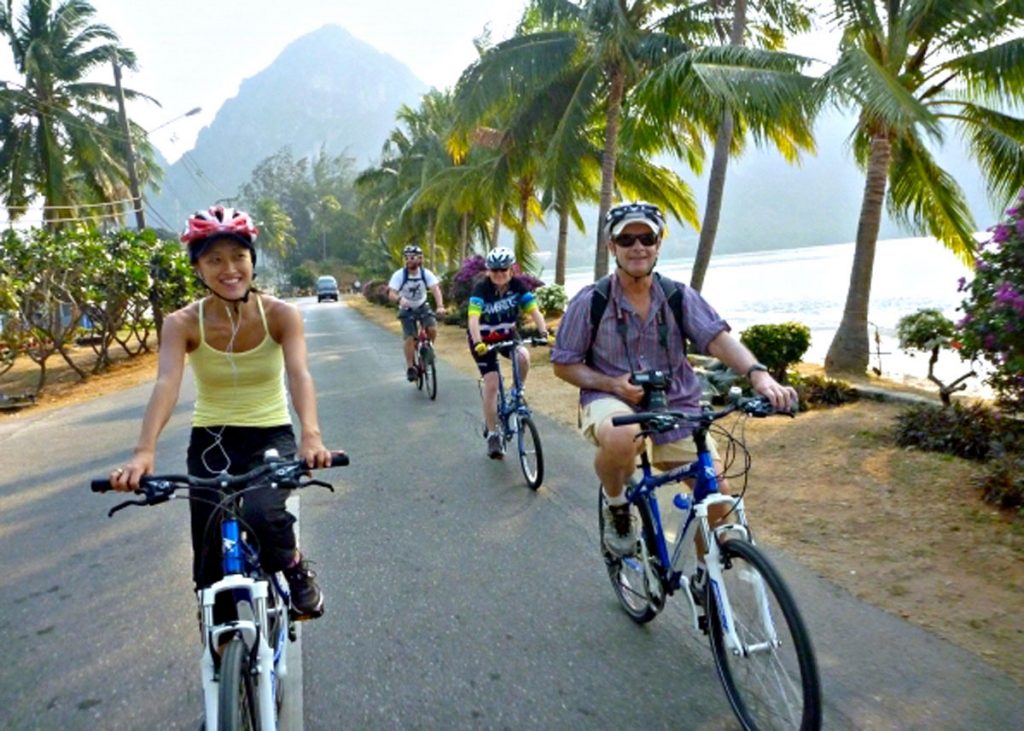
Bicycle (Touring)
On the other hand, seeing Thailand by cycle is a joy, especially if you choose a flat, under populated province like coastal Prachuap Khiri Khan. There are numerous cycle tour companies like Spice Roads and Grasshopper Adventures.
You can also join cycle tours to raise money for Thai charities, such as those organised in Australia by Hands Across the Water.
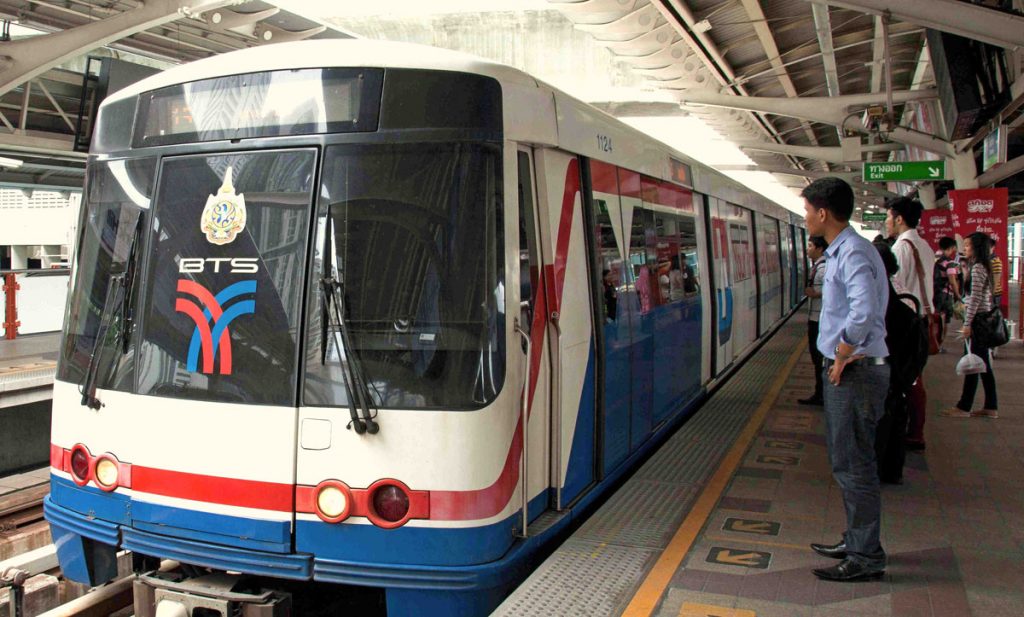
Mass Transit, Bangkok.
The capital has an ever-expanding system of well over 60 BTS SkyTrain and MRT metro subway stations that whisk you over or under the street-level snarls. They’re clean and airconditioned although often SRO crowded. The SkyTrain has a one-day Unlimited Pass for 150 baht that’s ideal for visitors; or there’s a 120-baht day pass for the MRT.
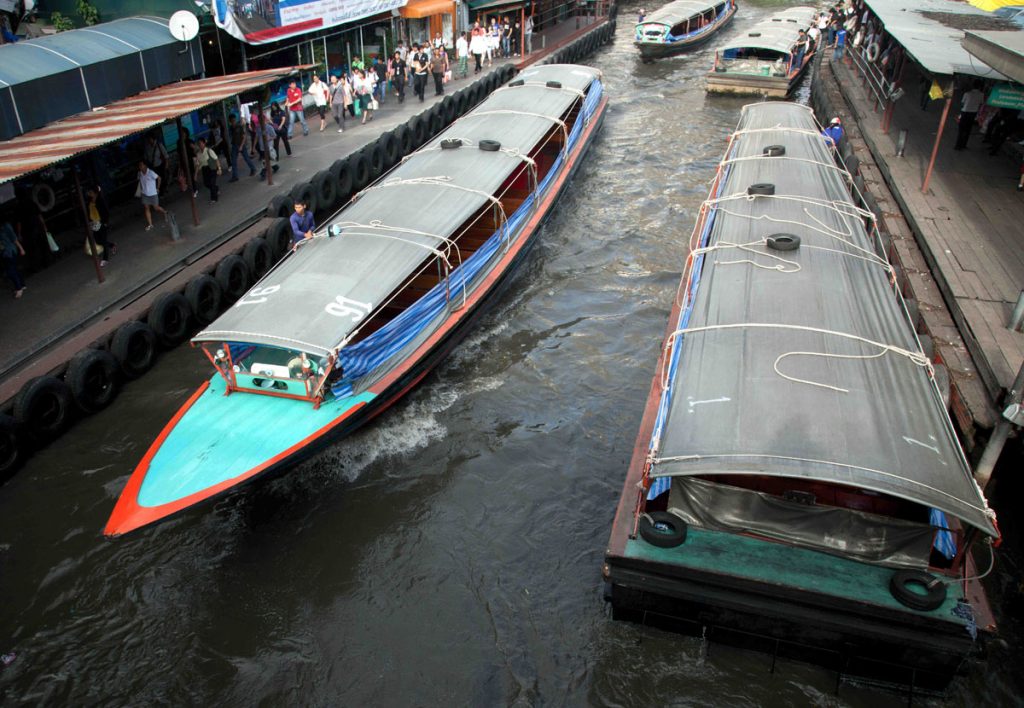
Canal Boat
Skinny canal boat ferries rocket along Bangkok’s khlong, making fleeting pit-stops at commuter wharves. Leap on and off — almost literally — at wherever stop you want. The conductor collects fares on board. This is a cheap-as-chips tour of Bangkok’s watery backdoors.
Car
Major international companies like Hertz, Budget and Avis, as well as local brands, offer late model vehicles (all are right-hand drive) for self-driving. But, for convenience and sightseeing, seriously consider hiring a car plus driver. Meanwhile, be sure to understand the insurance policy and always drive with your passport, your home country driver licence and an international driving permit on you.
Coach or Bus
Long-distance intercity buses crisscross the country. They are large, airconditioned, economical, colorful, have allocated seating and run to schedule (often on the hour), departing from large suburban bus stations like BKK’s Ekamai (eastern) and Mo Chit (northern) terminals.
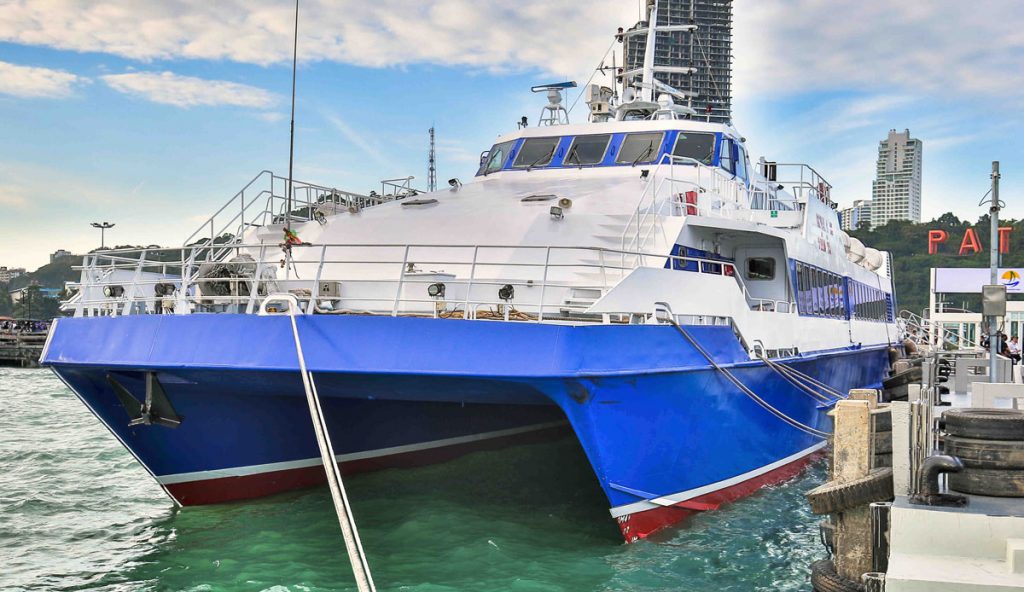
Inter-island Ferry
Travelling to poplar islands like Chang, Krabi, Kood and others is done by large ferry — some carry vehicles, others only people. Meanwhile speedboats (see below) serve the smaller islands. On some ferry services like Hua Hin—Pattaya you need to have official ID; for foreigners, this is your passport.

Longtail Boat
Rua hang yao are narrow-hulled craft with a howling diesel motor and long, extended propeller shaft — the “long tail”. They’re found everywhere from city canals to island beaches. Sit low, hang on, wear a life jacket if there is one and be prepared to cop some spray.
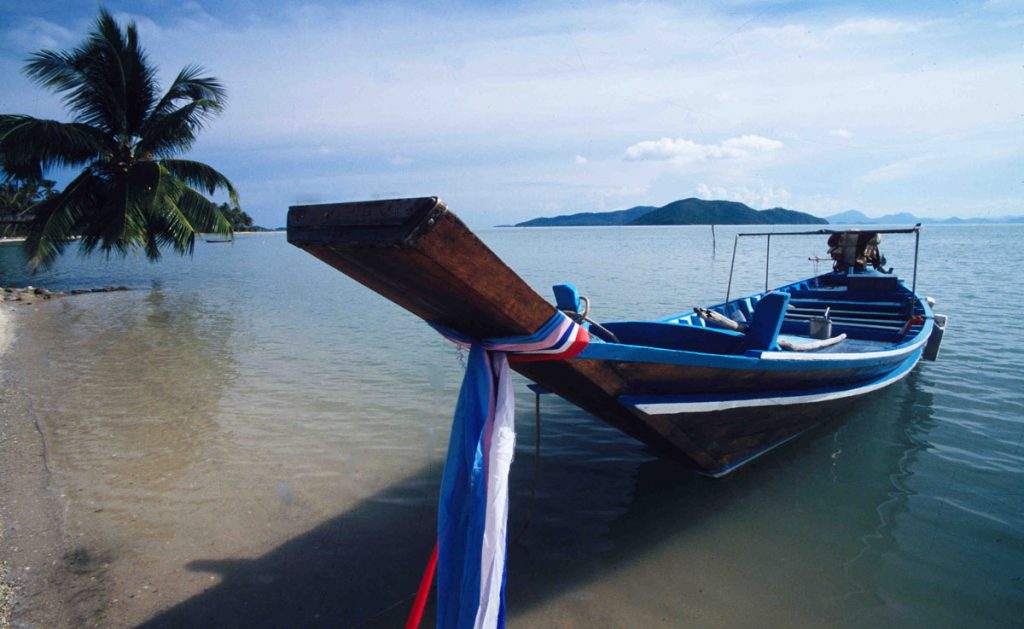
Motorcycle
Rental motorbikes are popular in most tourist centres and thus are a regular source of injured and dead foreigners. Understand: wear the helmet (it’s the law, despite all the Thais who don’t wear one). Stay sober (what could possibly go wrong? — you lose your insurance cover, for starters). Never assume you have right of way. Carry your passport and driver licence on you (and never leave either one as “deposit” for the motorbike). Question: does your travel insurance cover you? Probably not, unless you hold a valid motorcycle licence from your home country. (Australians, please note, a car licence is insufficient for motorbike insurance.)
Motorcycle Taxi
Moto-si dudes linger like home boys on city corners wearing numbered, low-vis vests. State your destination. Then agree on the fare — prices start from about 60 baht for a short trip, depending where you are. Use the helmet. Settle back for a slipstreaming, tailgating, maximum monoxide view of the traffic stampede. Freaky fun.
Plane
Thailand has an extensive domestic air network serviced by good carriers like Nok, Thai Smile, Air Asia and Bangkok Airways.
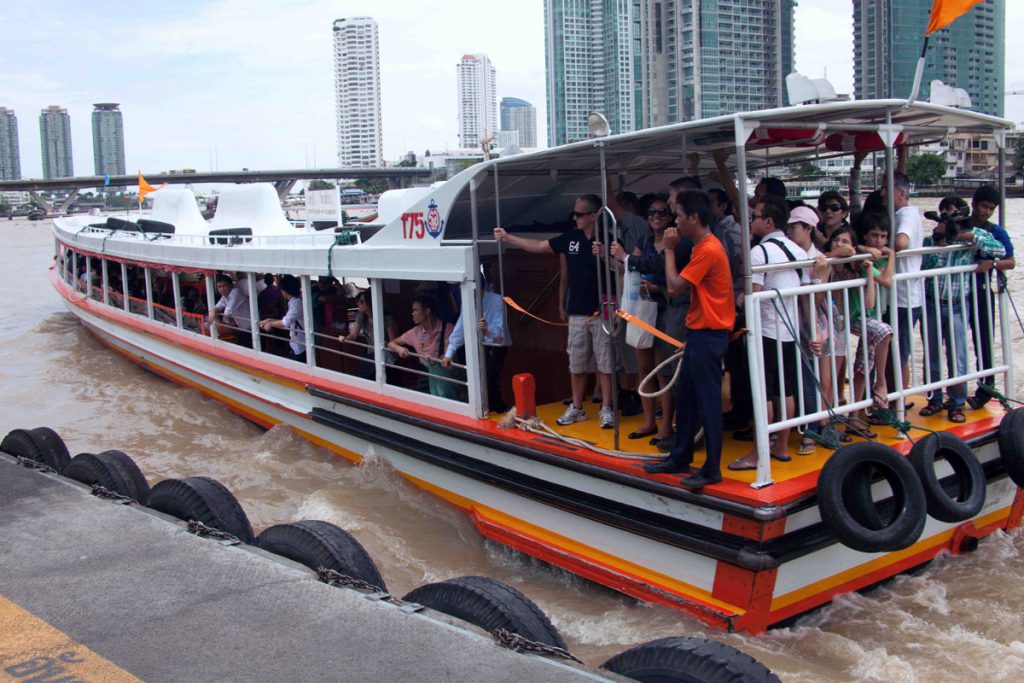
River Ferry
Bangkok has several main ferry services. The local commuter service, the Chao Phraya River Express is quick, crowded and cheap. It services numerous whistle-stop wharves and an on-board conductor collects fares. The Chao Phraya Tourist Boat is visitor-oriented and stops at piers near all main attractions — a one-day pass for 200 baht is recommended. The main departure point is Sathorn aka Central Pier, at Saphan Taksin Bridge. A new electric ferry service called My Smart Ferry is now operation, running between Rama V Bridge and Sathorn/Central piers, with weekend cruise itineraries.
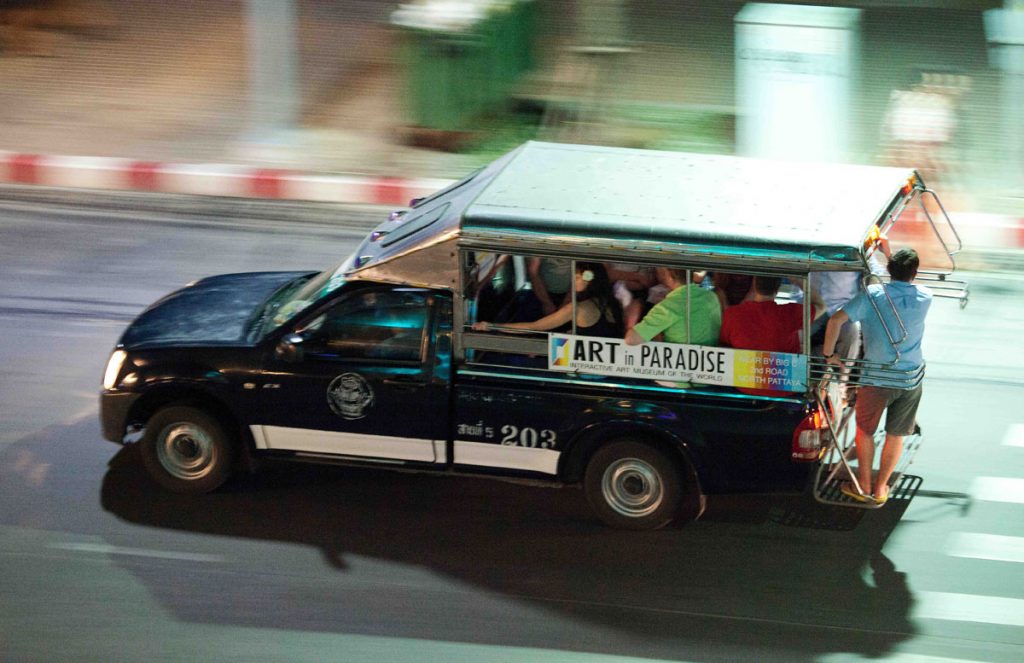
Songtaew or Baht Bus
In many places the most popular and economical form of suburban travel is the songthaew — “two seat” — a canopied light pick-up truck with two, inward-facing bench seats in the rear. Generally, they run on local circuit routes and passengers join and alight at any point, paying a flat fee. In Pattaya (where they are also called “baht buses”), for instance, the fare is 10 baht for Thais and foreigners alike. A longer journey is 20 baht. In other tourist destinations like Samui you might encounter invidious “double pricing” for foreigners.
Speedboat
Large passenger launches, with a canopy and powerful outboard motors, service smaller islands and daytrip excursions. They are fast and reliable but can be a bit crowded. Grab a life jacket and wear it. Make your reservation in advance.
Taxi
Bangkok meter taxis are plentiful and inexpensive. Many drivers speak little English so it’s good to have your destination address written in Thai script. Be sure the meter is on (flag-fall, 35 baht); if the driver won’t use it (“Sorry, broken”), just hop out — the next cab is about one minute away. Things are more difficult on some popular tourist islands where most taxis won’t use the meter and demand extortionate fares; try to use your hotel transfer service instead.

Tuk-tuk
The iconic tuk-tuk (real name samlor, “three-wheel”) is unmetered and drivers will charge whatever they think they can. Usually more expensive than a meter taxi. Don’t start your ride without agreeing on the fare. Mutant tuk-tuks are sometimes called Skylabs, such as on Koh Si Chang.
Van
Intercity passenger vans are fast, furious, frequent and risky. They have a dubious safety record in a country with one of worst road fatality figures anywhere. Flyer beware. Catch the bus or train instead.
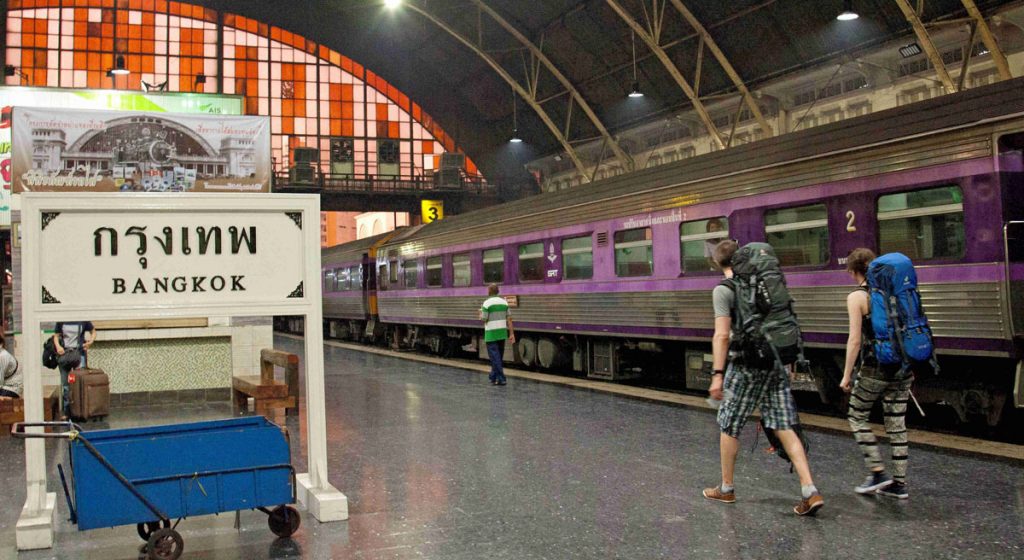
Train
Thailand has a good rail network and rail travel is a great way to see the country and to meet Thai people. Trains run on time and are clean, even if the rolling stock aged. The Bangkok—Chiang Mai Express is the classic rail journey, a 750-km night ride that will rock you on the narrow, one-metre gauge track. Reserve your seat in advance especially if travelling near public holidays. For much convenience and a small fee, book through an agent.
Words and photographs © John Borthwick 2023
The post A Ticket To Ride, Thailand-Style first appeared on Amazing Thailand.

